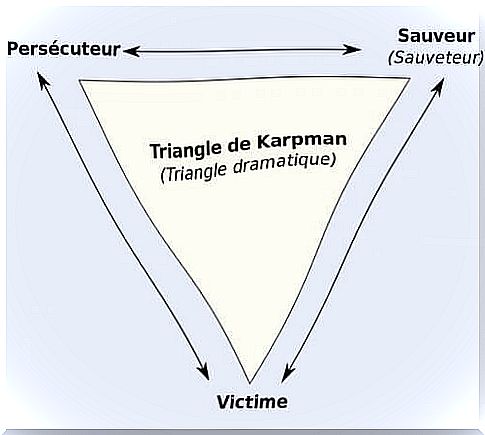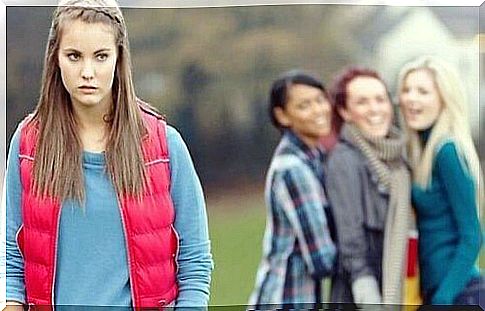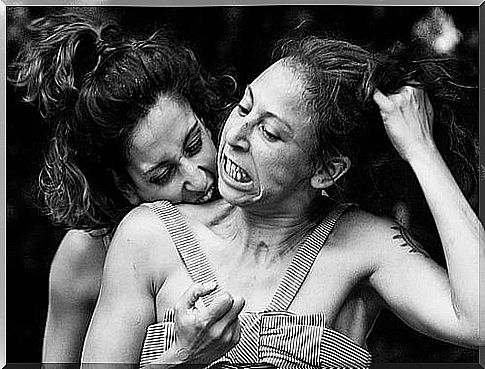Karpman’s Dramatic Triangle And Human Relations

The Karpman Drama Triangle, also known as the Karpman Triangle, is an interpretive pattern that arose as part of a psychotherapy called Transactional Analysis. This model presents a diagram of destructive human interactions, which take place when two (or more) people come into conflict.
This model was first described in 1968. It was Stephen Karpman who brought it to life. He cited it in an article titled Fairy Tales and Dramatic Screenplay Analysis. This theory visualized three basic roles in these tales and this is how Karpman’s Dramatic Triangle was born .
Currently, Karpman’s Dramatic Triangle has mostly therapeutic application. This is a very functional pattern to which psychotherapy patients respond very well. This facilitates awareness and engagement with the change.
Karpman’s Dramatic Triangle
In Karpman’s dramatic triangle, there are three basic roles. These are the roles that the “internal self” takes on in conflict situations, or when neurotic bonds dominate. These roles, in turn, give rise to “communicational transactions” or erroneous communications. We give the name of “psychological games” to these transactions.

The three roles that make up Karpman’s Drama Triangle are:
- The persecutor or accuser: he corresponds to those who think they have the right or the capacity to judge others. They calibrate them, gauge them. Usually, they suffer from a common illness: constant bad mood.
- The victim: this role corresponds to the person who adopts an attitude of fear and passivity towards his surroundings. She feels that other people don’t treat her well and that she doesn’t deserve it, but she does nothing to get out of this situation.
- The savior: he is the one who behaves as if he should help others, even if they do not ask him to. He wants to do all he can for others and encourage addiction. Usually he does not solve his own problems.
For the Karpman drama triangle to be created, all three roles must be present. However, a role swap usually takes place among those who make these kinds of connections.
Dynamics and role changes
As we have already pointed out, the bonds that form within Karpman’s dramatic triangle give rise to a form of communication in which “psychological games” dominate. These are fake communicative exchanges that aim to install one of the dramatic roles or to eliminate it.

Role changes often emerge from these psychological games. The most common is that the savior, tired of “defending” the victim, ends up turning into a persecutor. The victim may end up feeling that she has the right to become the persecutor of her executioner or her savior.
The persecutor, on the other hand, often turns into a savior after an act of contrition. Those who find themselves in the Karpman Drama Triangle are not feeling well and therefore are trying to change the situation. But they only manage to change their roles. Basically, the basic pattern of relations remains intact.
Changing roles
One of the more difficult aspects is this: Those involved in Karpman’s Drama Triangle fail to see themselves as irrational victims, persecutors, or saviors. They believe their role is perfectly logical and has valid reasons. They only see part of the picture. The victim only sees the mistreatment from which she is suffering. The persecutor only picks up on the mistakes and flaws of others.
The savior hides behind “good intentions”. In fact, each of them needs to develop a skill and / or a skill. The persecutor should strive to be more assertive. He should recognize his own needs and wants, refuse to satisfy wants and needs that are not his, and give up punishing others.
The victim, for his part, should work more on his autonomy. She must not only see the harm caused by others: she must also critically assess how she responds to this damage. Realizing her vulnerability and not using it as a pretext but as a starting point: this is what she should do.
Finally, the savior could be more empathetic. He should learn to listen to others and give up being responsible for their problems.









